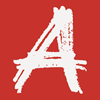Refugee week: 18–24 June
I wanted to write a blog post for Refugee Week. A tweet by Dr. Yvette Greslé gave me pause. Its worth reading her whole thread, informed as it is by her background, her practice, her research and her lived experience.
Who are we to represent others is a central question to the ‘Other’ section of OCA’s Level 2 (HE5) Photography’s The Self and the Other that I co-wrote with Moira Lovell.
Greslé’s comment that she is,
‘utterly opposed to white writers, artists and scholars speaking for experiences that are not theirs to speak of. This happens a lot in the art world and it is unethical, opportunistic and spurious’
points to why Self and Other has a lot about class — the working class experience being something I feel able to make work about. The idea that pointing your camera at things that are not part of your experience can only be tourism is also problematic — if you have privilege why not use that to highlight those less fortunate?
Who has the privilege is not always obvious even within a photograph.
In the Assimilation (2006–8) project I deliberately included subjects with different statuses calling everyone new arrivals. Some were on student visas, many were EU nationals, some were fleeing known, or unknown, horrors, others came to live with family
Who are the refugees in this image?
As John Tagg reminds us a portrait is a social inscription, its use by authority is categorise, Assimilation played with the idea that the portrait spoke a truth about the portrayed.
States and institutions need their dividing lines, their categories, to manage. A refugee can be denied asylum, returned ‘home’, forgotten.
I wanted to include refugees in The Desire Project (2015–16) elevating those with little to the atrium heights of the very public Frenchgate Centre. The project’s premise that participants expressed the thing they most wanted meant that a refugee’s desire could correspond with a shopper’s, teacher’s, mine, yours… There are no lines between us.
Ideally we should all be able to speak for ourselves on an equal footing. But when was the last time you, or your community was heard? Facilitating those with little voice to make work can help -
It also took Ania Bas and I to territory that we would probably never have visited — a seemingly trivial board game used to talk about the labyrinthine experiences of those seeking asylum?
I used my privilege once more to include refugees in a challenging work for the DNweekeND festival in 2016. In A Dream of Doncaster (2016) participants are glimpsed in a pitch black room illuminated only by the torches of other refugees. Is it right that I asked refugees to participate in art work that suggested darkened ships’ holds or shipping containers?
Refugee Week is 18 -24 June, pause, think.
Originally published at #weareoca.
